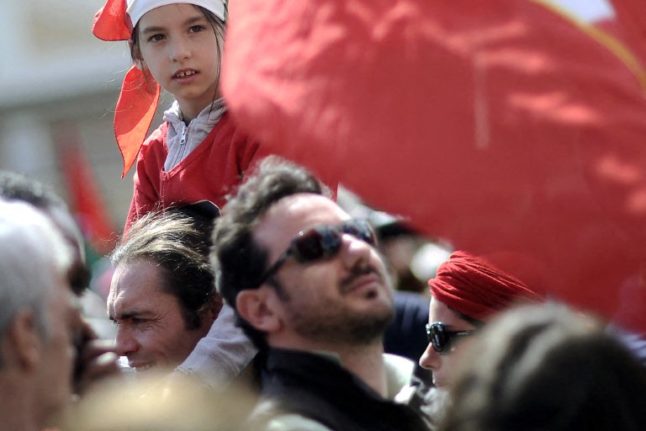As a teenager I used to think Valentine’s Day was one of the most stupid celebrations of all, particularly since it always happened when I was boyfriend-less.
I still find it quite ridiculous that there’s a day for couples to self-celebrate their relationship. But seeing my Italian friends get all worked up and excited about it weeks before, going crazy planning romantic weekends and dinners in exclusive restaurants, has made me realize that Valentine’s Day is really heartfelt in Italy, even more so than Carnival, with which it overlaps in February.
It’s yet another date for partying, which Italians excel at. But it is not perceived as a consumerist event, as just an excuse to splash out money and exchange gifts.
READ ALSO: Did Valentine’s Day really originate in Italy?
Italian couples generally do see it as the key moment to show their (alleged) love for each other, and to celebrate, usually by spending a couple of nights at a cozy agriturismo with a romantic dinner on February 14th.
This should come as no surprise given that Italians are famous for being very romantic and passionate in so many ways. However, I was surprised when I came across a survey demonstrating how it’s mostly men (65 percent) who really care about going out with their girlfriends to have a good time on Valentine’s Day.

On the other hand, some people tend to care more about appearances. Young women, in particular teenagers, like to show off at school or at the office, after a special night or weekend away, about what their boyfriends gifted them with, where they were taken for dinner, how luxurious the restaurant was and how much he spent on flowers, chocolates and drinks.
I recently discovered there’s a tiny restaurant for only two people (called ‘Solo Per Due’) which every year has to turn down hundreds of reservation requests.
Italians tend to be very showy, as if the amount of money spent on celebrating Valentine’s Day measured the amount of love felt for one another. Some women love to compete with their girlfriends over who had the best outfit and sexiest underwear, and whether the dinner was followed by extraordinary love-making. The climax of the soirée though is when the man proposes to his girlfriend.
READ ALSO: Here’s how to talk about love, sex, and dating in Italian
But generally speaking, as the survey highlighted, the majority of Italians find it important to be able to show feelings throughout the entire year, not just on Valentine’s Day. In fact, only 16 percent of Italians think Valentine’s Day is ‘la festa dell’amore’ (the celebration of love), as if couples only remembered to prove and demonstrate their reciprocal feelings through presents and expensive dinners on that particular day.
There is however a distinction between the old and new generations in the perception of the festivity. Older people don’t really ‘feel’ Valentine’s Day. It’s mostly for teenagers and young couples, though of course there are exceptions.
There’s a sarcastic, popular Italian saying which rhymes: ‘San Valentino è la festa di ogni cretino che pensa di essere amato e invece ci rimane fregato’, which translated into English means: ‘ Valentine’s Day is the party for all the idiots who believe they’re loved and then find out they’ve been fooled’. It hints at the risk that it’s all an illusion and was never real love in the first place.
My grandma used to tell me how the consumerist side of Valentine’s Day was a foreign import, and that Italians had lost touch with its deep, spiritual side, particularly the all-Italian origin of it.
It is after all a religious celebration. It marks the martyrdom of San Valentino, born in the Umbrian town of Terni, who used to marry Christian couples in secret and has come to be the patron saint of all lovers.
I must admit, until very recently I did not know myself that what is worshipped as the relic-skull of Saint Valentine is kept in the Roman church of Santa Maria in Cosmedin close to Circo Massimo, where tourists usually flock to admire the world-famous Bocca della Veritá (The Mouth of Truth) at the entrance.
Valentine’s Day is one of those festivities which are often seen as being imported from abroad and have taken root in Italy, whereas they actually originated in Italy as a religious cult, just like the one of Father Christmas (Santa Claus is San Nicola, whose relics are kept in Bari).
READ ALSO: Wine, masks and debauchery: How did Italy’s Carnival tradition begin?
In the old days fervent Catholic Romans used to pay homage to Saint Valentine by gathering around the relic to pray for love and happiness. My aunt would visit the church at dawn and light candles, asking Saint Valentine to help her 36-year-old daughter find a decent man who could ‘take care of her’ before her mother passed away.
I think in the future Valentine’s Day will only become further ingrained into modern Italian culture. The heart-shaped chocolates and jewels are now a part of tradition, but the original mysticism of the celebration will soon be totally forgotten.



 Please whitelist us to continue reading.
Please whitelist us to continue reading.
Member comments